
(a)
Interpretation:
Acrylic acid has to be classified among the given options.
Concept Introduction:
Carbonyl groups are the one which contain a double bond between carbon and oxygen atom.
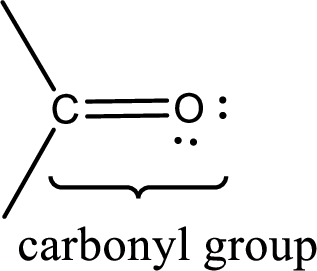
If a hydroxyl group is attached to a carbonyl group means it is known as carboxyl group. This can be represented as shown below,
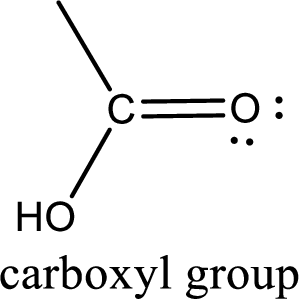
Apart from carboxyl group, there can be other functional group also that is present in the
(b)
Interpretation:
Maleic acid has to be classified among the given options.
Concept Introduction:
Carbonyl groups are the one which contain a double bond between carbon and oxygen atom. Aldehydes and ketones possess this carbonyl functional group in it. The structural representation of a carbonyl group can be given as shown below,

If a hydroxyl group is attached to a carbonyl group means it is known as carboxyl group. This can be represented as shown below,
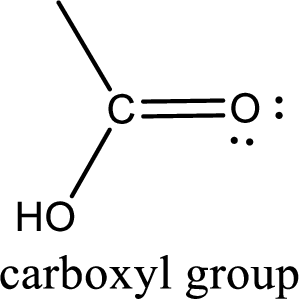
Apart from carboxyl group, there can be other functional group also that is present in the carboxylic acid. They are known as polyfunctional carboxylic acids. These occur naturally also. Some of the important type of polyfunctional carboxylic acids are hydroxy acids, keto acids, and unsaturated acids.
(c)
Interpretation:
Succinic acid has to be classified among the given options.
Concept Introduction:
Carbonyl groups are the one which contain a double bond between carbon and oxygen atom. Aldehydes and ketones possess this carbonyl functional group in it. The structural representation of a carbonyl group can be given as shown below,
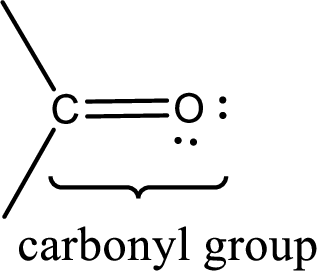
If a hydroxyl group is attached to a carbonyl group means it is known as carboxyl group. This can be represented as shown below,
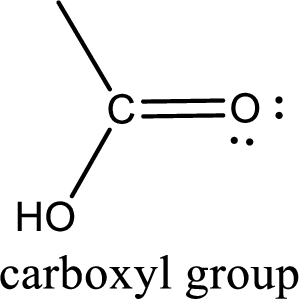
Apart from carboxyl group, there can be other functional group also that is present in the carboxylic acid. They are known as polyfunctional carboxylic acids. These occur naturally also. Some of the important type of polyfunctional carboxylic acids are hydroxy acids, keto acids, and unsaturated acids.
(d)
Interpretation:
Caproic acid has to be classified among the given options.
Concept Introduction:
Carbonyl groups are the one which contain a double bond between carbon and oxygen atom. Aldehydes and ketones possess this carbonyl functional group in it. The structural representation of a carbonyl group can be given as shown below,
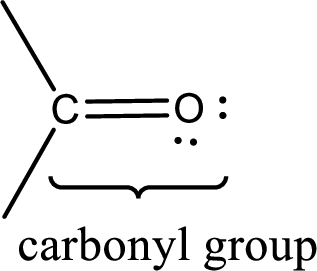
If a hydroxyl group is attached to a carbonyl group means it is known as carboxyl group. This can be represented as shown below,
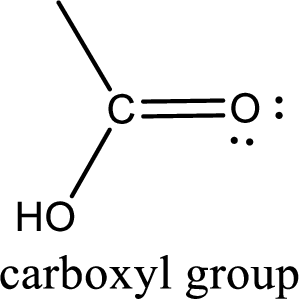
Apart from carboxyl group, there can be other functional group also that is present in the carboxylic acid. They are known as polyfunctional carboxylic acids. These occur naturally also. Some of the important type of polyfunctional carboxylic acids are hydroxy acids, keto acids, and unsaturated acids.
Want to see the full answer?
Check out a sample textbook solution
Chapter 16 Solutions
EBK GENERAL, ORGANIC, AND BIOLOGICAL CH
- Which of the following lipids is most susceptible to lipid peroxidation? A. Stearic acid B. Oleic acid C. Linoleic acid D. Linolenic acidarrow_forwardSuppose you have extracted an alkaloid from natural sources how will you establish the structure of an unknown alkaloid by chemical and physical methods.(PLEASE BRIEFLY EXPLAIN)arrow_forwardButanoic acid (C3H7COOH) is described as a weak acid. Define the term weak acidarrow_forward
- 41.) The bicarbonate system is composed of H2C03 and HCO3-. Which statement accurately describes these molecules? a.) H2CO3 and HCO3- are both strong bases. b.) B) H2CO3 is a strong base, and HCO3- is a weak acid. c.) C) H2CO3 is a weak acid, and HCO3- is a weak base. d.) D) H2CO3 and HCO3- are both weak acids. e.) E) H2CO3 is a weak base, and HCO3- is a weak acid.arrow_forwardWhat is the difference between a monoprotic acid and a diprotic acid? Give an example of each.arrow_forwardWhich of the following is/are NOT (an) essential fatty acids? A. arachidonic acid B. linoleic acid C. palmitic D. oleic acidarrow_forward
- All of the following are repeating units of glycosaminoglycans EXCEPT: A. hyaluronate B. heparin C. hemoglobin D. keratin sulfate E. chondroitin 6-sulfatearrow_forwardAll of the following are examples of monounsaturated fatty acids except A. Palmitoleic acid B. Oleic acid C. Elaidic acid D. Linoleic acidarrow_forwardDefine the following terms:a. acidb. basea. weak acidd. weak basee. conjugate basearrow_forward
- What is indolacetic acid(IAA)?arrow_forwardZinc is a cofactor of which of the following enzymes? A. Xanthine oxidase B. Glutathione proxidase C. Carbonic anhydrase D. Lysyl oxidasearrow_forwardDefine the following terms: a. monounsaturated fatty acid b. polyunsaturated fatty acid c. saturated fatty acid d. nonessential fatty acid e. essential fatty acidarrow_forward
